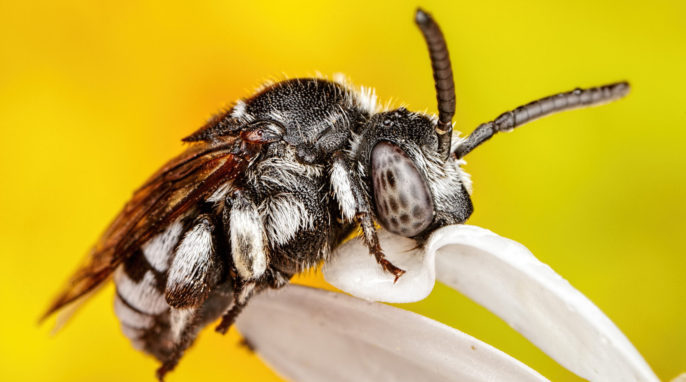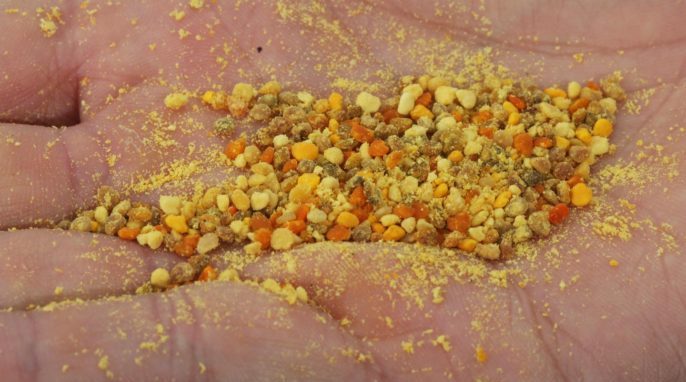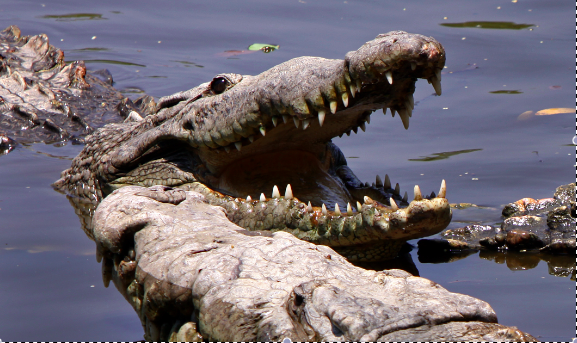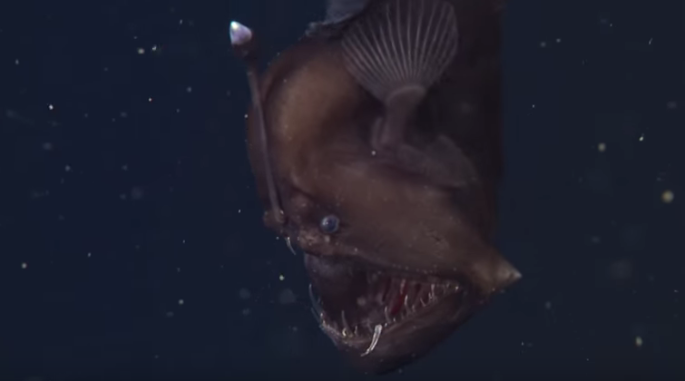Why Doesn’t the Queen Kill Her?
Bumblebees often fight for control of colonies [4]. Many bumblebee queens prefer to usurp a colony by battling with the reigning queen of a colony instead of investing energy to build a new colony. In usurpation a queen bee comes in and directly battles with the resident queen. The workers follow the maxim, “The Queen is dead; long live the Queen!”
A cuckoo bee, on the other hand, does not enter a colony as a queen. She initially does battle with colony workers until she establishes herself in the nest as a dominant bee; however, she isn’t immediately laying eggs or directly attacking the queen. After several days of being well fed and cared for by the worker bees, the cuckoo bee begins to lay eggs. Bumblebee workers normally do not lay eggs until a colony size reaches approximately 80 workers [3]. In the study, the colonies were smaller than this size, and each queen was fully dominant until the cuckoo bee intruded. Once the cuckoo bee began laying eggs, the queen ceased her own egg laying and was pushed out of the nest, usually dying within a few days. With no queen exerting dominance anymore, the worker bumblebees began to lay eggs too. After a few days, they either killed or chased away the cuckoo bee.
Beekeepers in South Africa have observed and reported on a similar behavior in Apis mellifera capensis, a species noted for its ability to produce workers and queens from unfertilized eggs laid by workers. When worker bees from one colony lay eggs in another colony, the host queen stops laying eggs and a new queen develops from the intruder’s egg [4]. This may be an indication of an underlying behavior common to bee species, which cuckoo bees are able to take advantage of when taking over colonies.

Most Bees Are Solitary
Social bees represent only about 10 percent of the estimated 20,000 bee species worldwide. Most species of bees and cuckoo bees are solitary and do not have the complex social interactions described in the bumblebee study. Solitary cuckoo bees drink nectar from flowers but do not gather pollen or build nests. They are essentially homeless and can be encountered sleeping in the open, much like new queens from social colonies before they establish (or take over) a colony. To sleep safely, cuckoo bees typically find a twig, blade of grass, or flower petal, and lock their mandibles in place. This anchors them securely, so they can’t fall off while asleep.
Environmental Indicators
Some scientists view kleptoparasitic bees as indicator species within bee communities [5]. Some cuckoo bees (such as Nomadinae) are generalists, attacking multiple species, but most cuckoo bees only target a few very closely related species. As we have seen, solitary cuckoo bees sleep in the open. Thus the presence and frequency of cuckoo bees provide an easy method for determining both the population of host species and, in turn, the environmental quality based on species richness [6]. Why not directly measure the host species? Scientists don’t always find the bee nests, but the cuckoo bees do and it is easier to find the cuckoo bees reliably.
About the Photographs
John Kimbler learns about the habits and quirks of his subjects so that he can get the image he wants. The sleeping cuckoo bee was photographed with a Canon 70D (F16, 1/250, ISO 100) + a Canon MP-E 65mm macro lens (around 2x) + a diffused MT-24EX. The image is a single, uncropped frame taken hand held. John has an extensive gallery with photo specs and technique comments at https://www.flickr.com/photos/dalantech/.
About the Photographer
John Kimbler is a network engineer and award-winning macro photographer. He was selected as Digital Photographer Magazine’s “Macro Digital Photographer of the Year” in 2009. John is the author of Extreme Macro—the Art of Patience. His work has also been featured on NationalGeographic.com. John is currently based in Naples, Italy.
About the Author
Steven Spence contributes photography and general science articles to GotScience. Steven’s extensive body of work in nature photography is both beautiful and informative. He enjoys photography, nature, and science, and is an avid fan of Calvin and Hobbes. He researches his subjects, showcases his concerns about the environment, and advocates for more biodiversity and fewer pesticides in agriculture.
References
[1] http://dx.doi.org/10.1080/00379271.2016.1146632
Benoît Geslin, Violette Le Féon, Michael Kuhlmann, Bernard E. Vaissière, and Isabelle Dajoz (2016). “The bee fauna of large parks in downtown Paris, France.” Annales de la Société entomologique de France.
[2] UC Berkeley Urban Bee Lab: http://www.helpabee.org/cuckoo-bees.html.
[3] Cor Van Honk, Peter-Frank Röseler, Hayo Velthuis, and Marieke Malotaux. “The conquest of a Bombus terrestris colony by a Psithyrus vestalis female.” Apidologie 12, no. 1 (1981): 57-67.
[4] http://digitalcommons.usu.edu/cgi/viewcontent.cgi?article=1109&context=piru_pubs. George E. Bohart. The evolution of parasitism among bees. Faculty Honor Lecture, Utah State University, April 22, 1970.
[5] https://hal.archives-ouvertes.fr/hal-01201320/document. Cory Sheffield, Alana Pindar, Laurence Packer, Peter Kevan. “The potential of cleptoparasitic bees as indicator taxa for assessing bee communities.” Apidologie, Springer Verlag, 2013, 44 (5), pp.501-510.
[6] Cory Sheffield, Alana Pindar, Laurence Packer, and Peter Kevan. “Bee (Hymenoptera: Apoidea) diversity within apple orchards and old fields in the Annapolis Valley, Nova Scotia, Canada.” The Canadian Entomologist 145, no. 01 (2013): 94-114.
GotScience.org translates complex research findings into accessible insights on science, nature, and technology. For more science news sign up for our eNewsletter.




